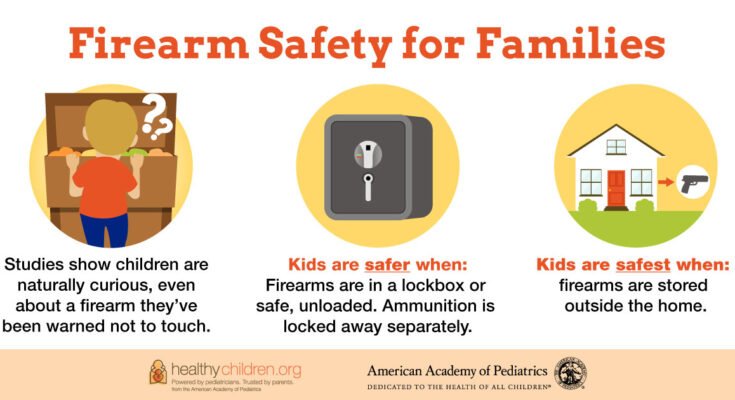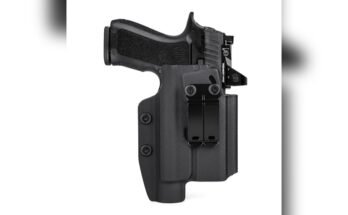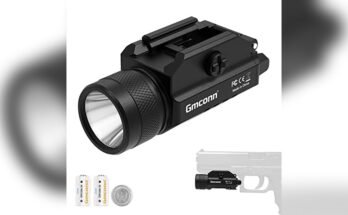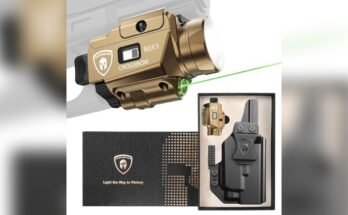I’ve coached new shooters, trained with pros, and lived with a personal rule: safety is a habit, not a moment. If you’ve wondered, How do I store a gun in a holster safely?, you’re already on the right path. The goal is simple: keep the trigger protected, the firearm controlled, and access consistent while reducing risk at home and in daily life. In this guide, I’ll share field-tested tips, common mistakes to avoid, and practical steps that fit real routines.
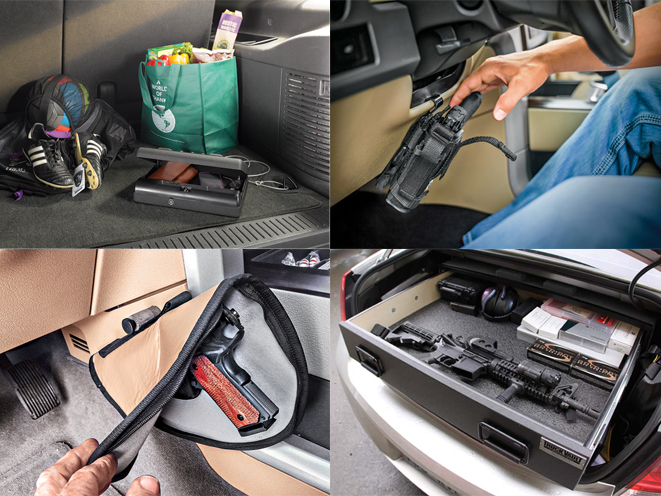
Source: skillsetmag.com
Core Safety Principles For Storing A Gun In A Holster
Safe holster storage starts with a short list you never skip. These basics reduce risk in every setting, from home to the range to travel.
- Treat every firearm as if it is loaded. Build the habit even when you think it isn’t.
- Keep the trigger fully covered. A proper holster shields the trigger guard from any contact.
- Keep the muzzle in a safe direction. Do not point it at anything you are not willing to destroy.
- Maintain consistent orientation. Store the holstered gun in the same direction and position every time.
- Control access. Use locked storage when the gun is not in your direct control.
- Know your local laws. Storage and carry rules vary by state and city.
A quick personal note: the most preventable incidents I’ve seen came from people breaking one rule “just this once.” Consistency wins.
Source: www.reddit.com
Choosing The Right Holster For Safe Storage
The holster is your first layer of safety when the gun is not in your hands. Pick with care.
- Full trigger guard coverage: No gaps. No flex that presses into the trigger.
- Rigid mouth and body: Kydex or reinforced leather holds shape and avoids collapse.
- Retention you can trust: Friction fit or positive retention (Level II or higher) keeps the gun in place if bumped or dropped.
- Secure attachment: Solid belt clips, loops, or mounting hardware that do not slip.
- Fit for your exact model: Generic fit invites movement and risk.
- Sweat guard and comfort: Keeps the slide protected and reduces skin contact.
My lesson learned: I once tried a soft nylon holster for quick errands. It collapsed when I removed the gun, and a cord snagged near the trigger. That was my last day using a floppy holster. Rigid beats soft for safety.
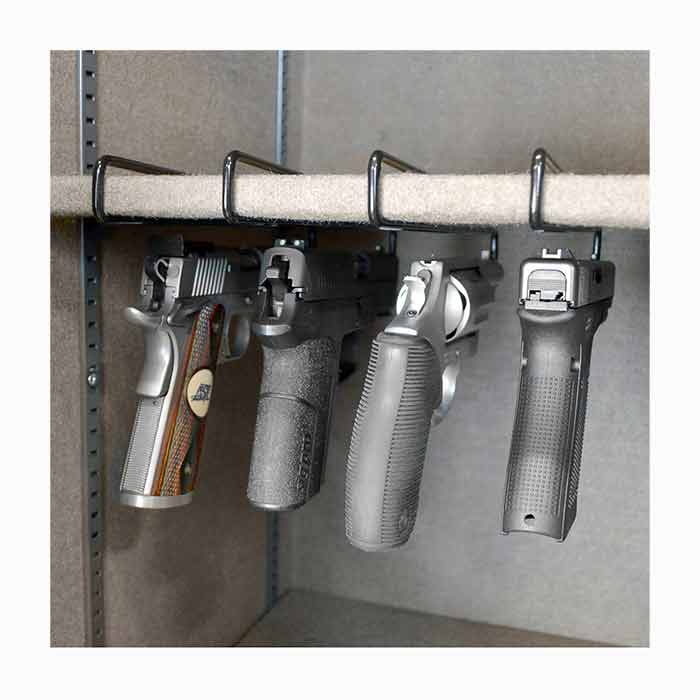
Source: maximumsecurity.com
Safe Storage At Home With A Holstered Firearm
Holsters protect the trigger, but home storage adds layers. Build a plan that balances security and readiness.
- Use a safe or lock box: Quick-access lock boxes minimize delay while keeping others out. Use a tether or mount to prevent theft.
- Store in a set position: Muzzle in a safe direction, same orientation every time, in a dedicated spot inside the safe.
- Keep it clean and dry: Use a dry, lint-free space. Avoid drawers with loose items that can press into the holster.
- Separate ammunition if required: Know your local laws and follow them when not carrying.
- Control who knows the location: Limit knowledge to responsible adults in the household.
- Use child-resistant measures: Even with a holster, use locks and education. Treat curiosity as a given, not a maybe.
Evidence from injury-prevention research is clear: locked storage, especially with quick-access devices, lowers the risk of unauthorized use and accidents. Pair the holster with secure storage for best results.

Source: theprovidentprepper.org
Daily Carry, Off-Body Storage, And Vehicle Considerations
Real life is messy. You may need to remove your holstered gun at work, the gym, or in a car. Build safe routines.
- Use a holster that allows safe on/off transitions: Rigid design, strong clip or loop, no need to touch the trigger area.
- Avoid loose bags: Off-body carry in a backpack or purse demands a rigid holster and a dedicated, closed compartment.
- In vehicles, use a mounted lock box: Do not wedge the holstered gun between seats or in a glove box without a lock.
- Keep cords and drawstrings away: Avoid lanyards, hoodie strings, or cables near the trigger area.
- Treat temporary storage as real storage: Even “just a minute” means using a lock box.
- Never handle in public: Move to a private, safe location to remove or secure the holstered firearm.
From experience: the riskiest moments are transitions. Slow down, breathe, and follow the same steps every time. Consistency prevents slips.

Source: bulletin.accurateshooter.com
Maintenance, Inspection, And Rotation
Holster safety is not set-and-forget. Time and use change fit and function.
- Inspect weekly: Check screws, clips, and retention. Look for cracks, warping, or loose hardware.
- Re-tighten hardware: Use thread locker where recommended by the maker.
- Clean the holster: Remove lint and debris that can migrate to the trigger area.
- Replace when worn: If retention weakens or the mouth collapses, retire it.
- Check compatibility after gun mods: Sights, optics, lights, or compensators can change fit and retention.
- Train with your setup: Practice safe draws and reholstering with inert training tools in a controlled setting.
Industry testing and user data show that worn holsters correlate with poor retention and accidental snags. If you question the gear, upgrade it.

Source: www.ebay.com
Legal, Ethical, And Insurance Considerations
Responsible storage goes beyond gear. It includes law, ethics, and financial protection.
- Follow local storage laws: Some areas require locked storage or unloaded conditions at home.
- Understand transport rules: Vehicle and interstate rules vary, especially for loaded firearms and magazine limits.
- Document your storage plan: Helps with training, family awareness, and insurance claims.
- Consider liability coverage: Some homeowners and renters policies exclude firearms incidents; confirm your coverage.
- Train other adults in the home: Safe handling basics and emergency procedures build a culture of safety.
- Plan for emergencies: Fire, theft, or disaster plans should include how to secure or retrieve firearms responsibly.
Responsible ownership is a community value. The choices you make about storage affect everyone who enters your home.

Source: www.concealedcarry.com
Frequently Asked Questions Of How Do I Store A Gun In A Holster Safely?
Should I Store My Gun Loaded In A Holster At Home?
It depends on your local laws, your home risk profile, and your storage setup. If you choose to keep it loaded, use a secure, quick-access lock box and keep the gun in a rigid holster with the trigger fully covered. If you are unsure, seek local guidance and consider keeping it unloaded and locked.
What Holster Material Is Safest For Storage?
Rigid materials that hold shape, like Kydex or reinforced leather, are safest. They cover the trigger guard and resist collapse, which lowers the chance of an object pressing into the trigger.
Is Off-Body Storage In A Bag Safe?
It can be, if you use a dedicated compartment and a rigid holster, and the bag stays under your direct control. Do not toss a holstered gun into a mixed pocket with keys or gear. A small lock box is safer when you cannot maintain control.
How Often Should I Replace My Holster?
Replace it when retention weakens, the mouth collapses, hardware loosens repeatedly, or after major gun changes. Many users find three to five years is common for daily carry, but inspect regularly and replace on condition, not calendar.
Do I Need A Gun Safe If I Already Use A Holster?
Yes. A holster protects the trigger; a safe controls access. Pairing both is the best way to reduce unauthorized handling and theft.
Can I Store A Holstered Gun In A Vehicle?
Only if it is legal in your area, and only in a mounted, locked container. Vehicles are high-theft environments. Avoid leaving firearms in cars whenever possible.
Conclusion
Safe holster storage is about layers: a rigid, well-fitted holster; consistent habits; and controlled access with secure storage. Choose quality gear, follow the same routine every time, and keep learning. Small steps today prevent big problems tomorrow.
Put this guide to work now. Inspect your holster, set a safe storage location, and add a quick-access lock box if you do not have one. Want more tips and research-backed updates? Subscribe, share your questions in the comments, and keep building safe habits.
Watch This Video on How do I store a gun in a holster safely?
